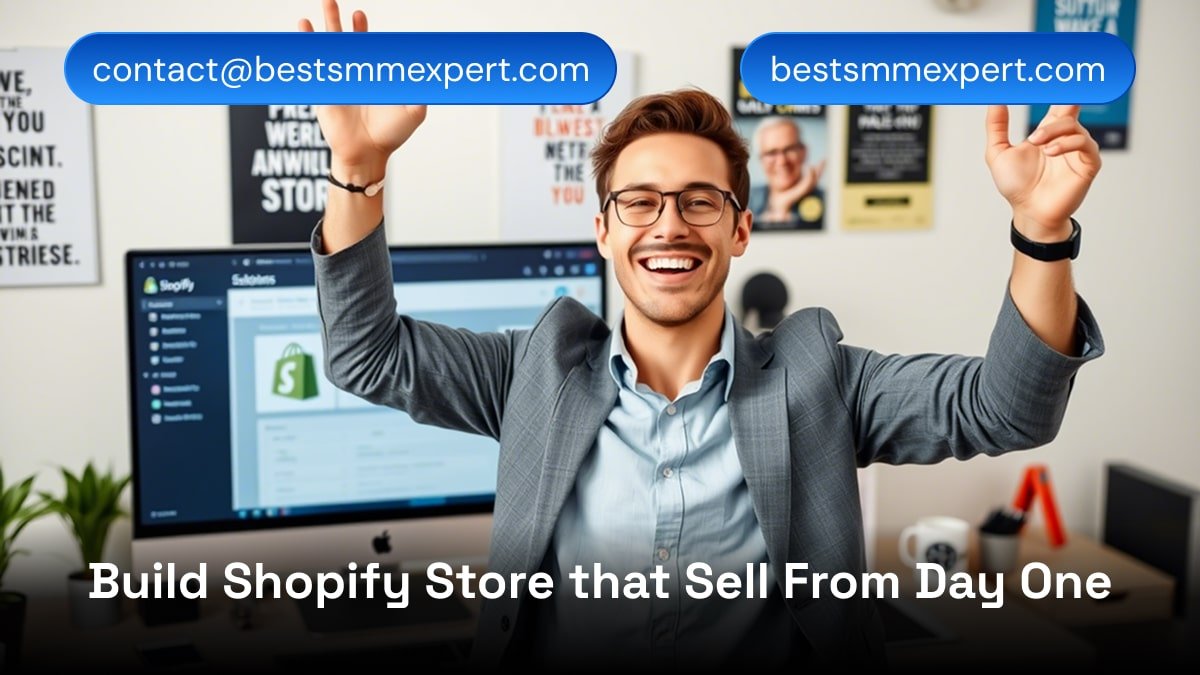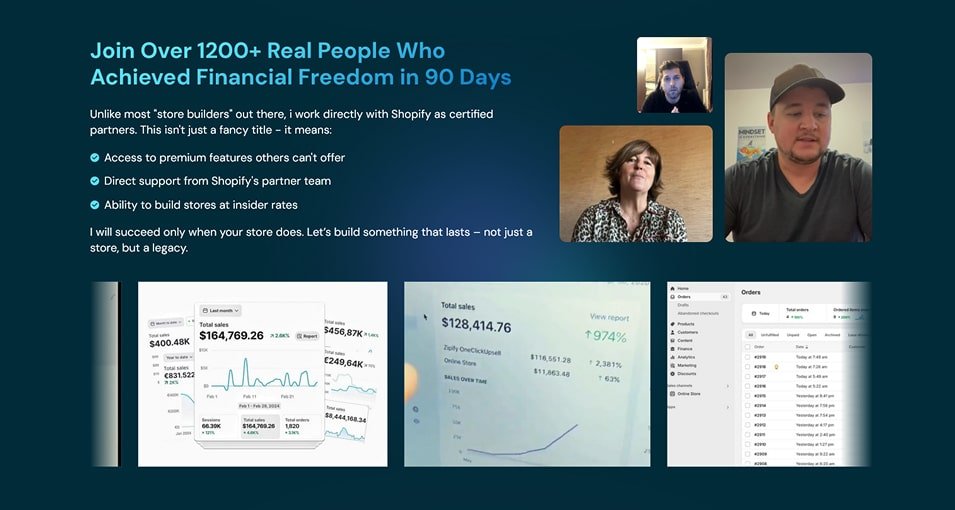
Creating a single product website that generates $10,000 in just 30 days might sound like a bold claim, but trust me, it’s entirely possible. In fact, it’s something I achieved with the right tools, strategy, and a bit of creativity. If you’re looking to replicate this success or even surpass it, you’re in the right place.
In this blog post, I’ll break down every step I took to build, optimize, and market my single product website. Whether you’re new to dropshipping or have some experience, this guide will give you actionable steps to help you achieve similar results.
But before we dive into the details, let me tell you one thing: the key to my success wasn’t just about what I did, but also about how I did it – and a big part of that came from working with experts like M Rostam Digital, who helped me set up my Shopify store flawlessly.
Why a Single Product Website Is a Smart Business Model
If you’re wondering why I chose a single product website instead of a traditional eCommerce store, here’s the deal:
Table of Contents
A single product website allows you to:
- Laser-focus your marketing efforts.
- Simplify the customer’s decision-making process.
- Create a strong, cohesive brand around one product.
Think about it: would you rather shop at a store with one amazing product or scroll through hundreds of options that might not even interest you? Exactly.
A single product website can help you stand out in a crowded market, especially when paired with expert services like those offered by M Rostam Digital.

Step 1: Choosing the Right Product
Your product is the heart of your store. If you get this wrong, no amount of marketing can save you. Here’s how I selected my winning product:
My Product Selection Process
- Identify a Problem
People buy products that solve problems. I chose a portable, rechargeable blender that appealed to health-conscious individuals who wanted smoothies on the go. - Analyze Market Trends
I used tools like Google Trends and TikTok to identify trending products. The blender was gaining traction among busy professionals and gym-goers. - Ensure Good Profit Margins
I made sure my product had at least a 50% profit margin to cover advertising and operational costs. - Check Competition
I avoided oversaturated markets by finding a unique angle for my product (e.g., offering faster shipping and better packaging).
If you’re struggling to find the right product, M Rostam Digital can help with their niche research and 5 trending products included in their store setup packages.
Step 2: Building the Website
Once I had my product, I moved on to creating a professional-looking, high-converting website. This part is crucial – your website is your online storefront, and first impressions matter.
How I Built My Website
- Platform Choice: I used Shopify because it’s user-friendly and integrates seamlessly with dropshipping tools.
- Professional Design: I worked with M Rostam Digital to design a clean, mobile-responsive website. Their expertise in basic store design, urgency timers, and trust badges made a huge difference.
- Essential Pages: I included must-have pages like:
- Home
- Product Page
- About Us
- Contact Us
- FAQs
Key Features That Boosted Conversions
- High-Quality Product Images: Professional photos that showcased the blender from every angle.
- Compelling Sales Copy: Benefits-focused descriptions like “Blend smoothies anywhere, anytime!”
- Urgency Timers: Limited-time offers to create FOMO (Fear of Missing Out).
- Instant Checkout Options: PayPal, Apple Pay, and Google Pay for a seamless checkout experience.
Step 3: Driving Traffic to the Website
A beautifully designed website is useless without visitors. Here’s how I drove targeted traffic to my single product website:
1. Paid Advertising
I started with Facebook and Instagram ads. Here’s what worked:
- Target Audience: Health-conscious individuals aged 18-35.
- Ad Creative: A short video showing the blender in action (e.g., blending a smoothie in a park).
- Ad Budget: $20/day to start, with gradual increases as sales rolled in.
2. Influencer Marketing
I partnered with micro-influencers in the fitness and lifestyle niche. They created authentic content showcasing the blender, driving both traffic and sales.
3. Organic Social Media
I built an Instagram account for my brand, posting daily content like smoothie recipes, user testimonials, and behind-the-scenes shots.
4. Email Marketing
I used automated email flows to engage visitors:
- Welcome emails for first-time visitors.
- Abandoned cart reminders (set up by M Rostam Digital).
- Post-purchase follow-ups to encourage repeat purchases.
Step 4: Optimizing for Conversions
Driving traffic is one thing, but converting visitors into customers is where the magic happens. Here’s how I optimized my website for maximum conversions:
Key Conversion Strategies
- Fast Load Times: I worked with M Rostam Digital to optimize my site’s speed.
- Product SEO: My product page was fully optimized with keywords like
portable blenderandsingle product website - Customer Reviews: I added real reviews and photos from early customers to build trust.
- Limited-Time Offers: Flash sales and countdown timers created urgency.
A Quick Conversion Comparison Table
| Strategy | Conversion Rate Boost |
|---|---|
| Urgency Timers | +15% |
| Customer Reviews | +20% |
| SEO-Friendly URLs | +10% |
| Instant Checkout Options | +25% |
Step 5: Scaling the Business
Once I hit $5,000 in sales, I reinvested my profits to scale the business:
- Increased Ad Spend: I doubled my daily ad budget.
- Expanded Marketing Channels: I started running Google Shopping ads.
- Improved Packaging: I upgraded to eco-friendly packaging to align with my audience’s values.
FAQs About Single Product Websites
1. What is a single product website?
A single product website focuses on selling one specific product, creating a targeted shopping experience for customers.
2. How much does it cost to start a single product website?
You can start with as little as $500, including website setup, product sourcing, and initial advertising.
3. How do I choose the right product?
Look for products that solve a problem, have high demand, low competition, and good profit margins.
4. Can I really make $10,000 in 30 days?
Yes, with the right product, marketing strategy, and a professional website, it’s entirely possible.

Conclusion: You Can Do This Too
Building a single product website that makes $10,000 in 30 days isn’t just a dream, it’s a realistic goal if you follow the right steps. From choosing a winning product to creating a high-converting website, everything matters.
If you’re ready to start your journey, I highly recommend checking out M Rostam Digital’s Shopify dropshipping store design services. Their expertise in store setup, SEO, and automation can save you time and help you get results faster.
Ready to build your single product website? Visit M Rostam Digital now and take the first step toward your eCommerce success!
Want to Launch a Shopify Store in Just 1 Day? Here’s How!
If you’re excited about starting your eCommerce journey but don’t want to spend weeks building a store from scratch, there’s a faster way to get started: pre-built Shopify stores. These stores are professionally designed, fully optimized, and ready to launch – saving you time and effort.
For a detailed guide on how to launch a pre-built Shopify store in just one day, check out this article: How to Launch a Pre Built Shopify Store in 1 Day.
